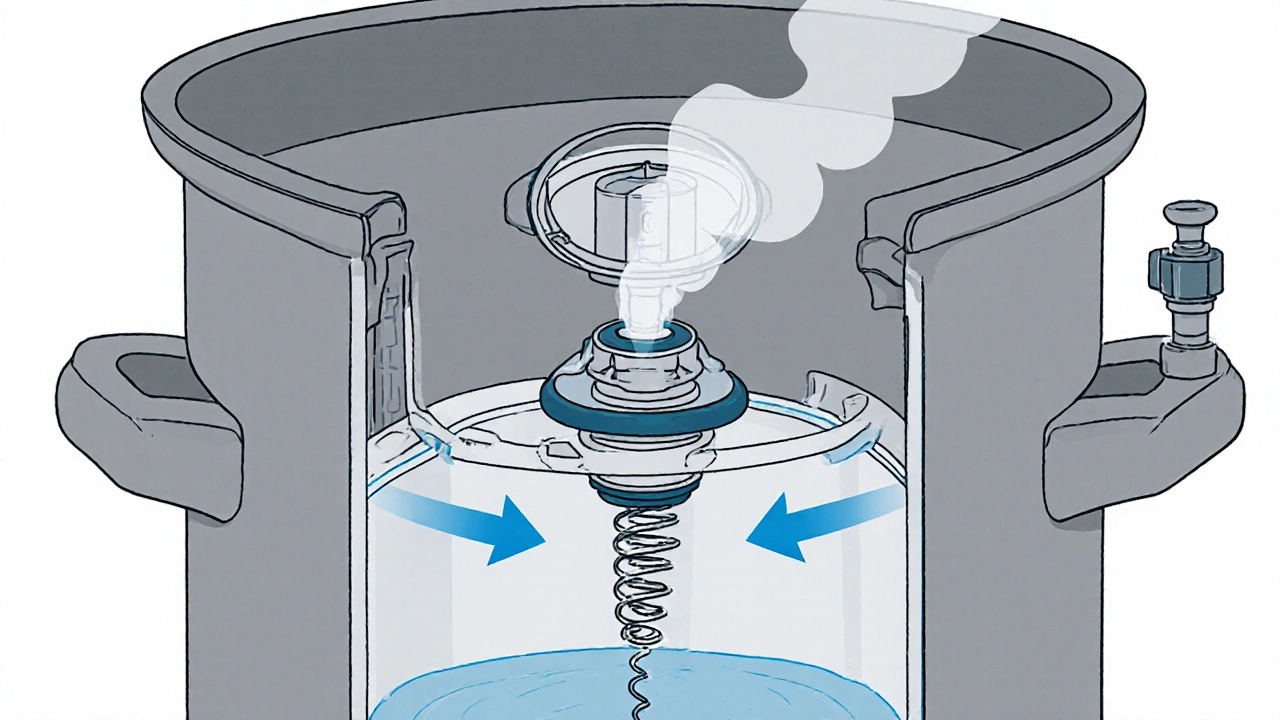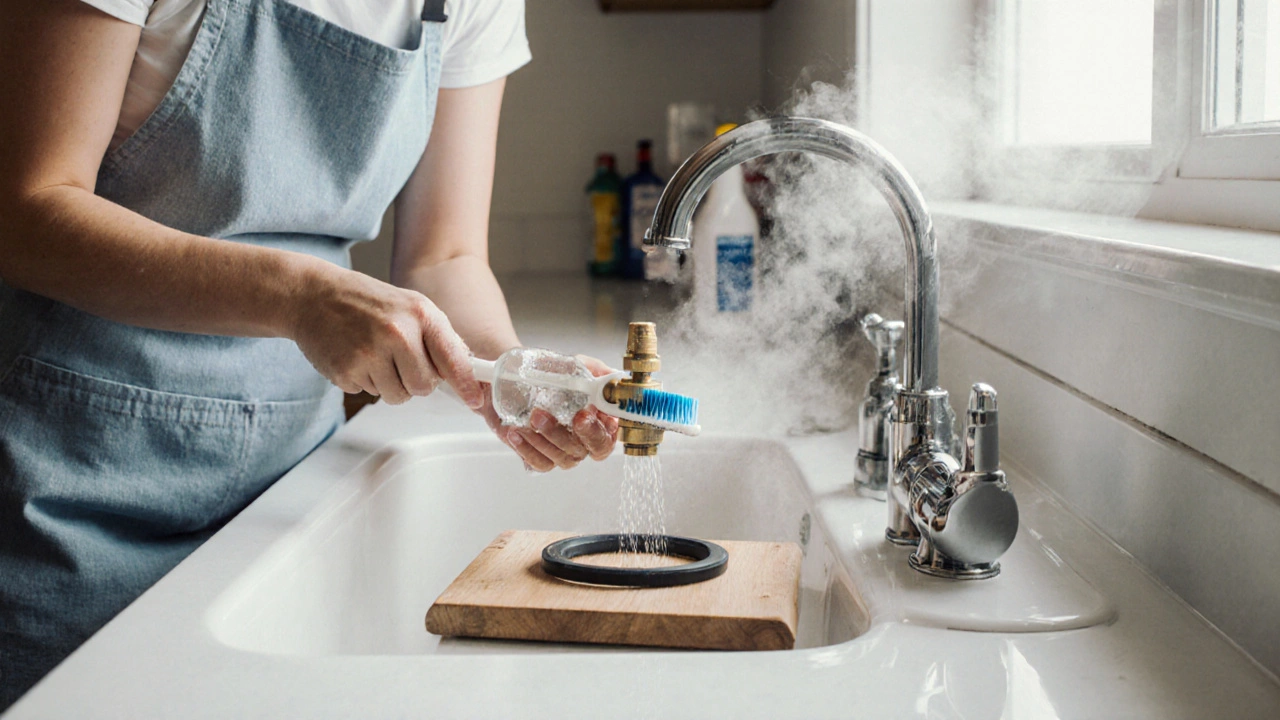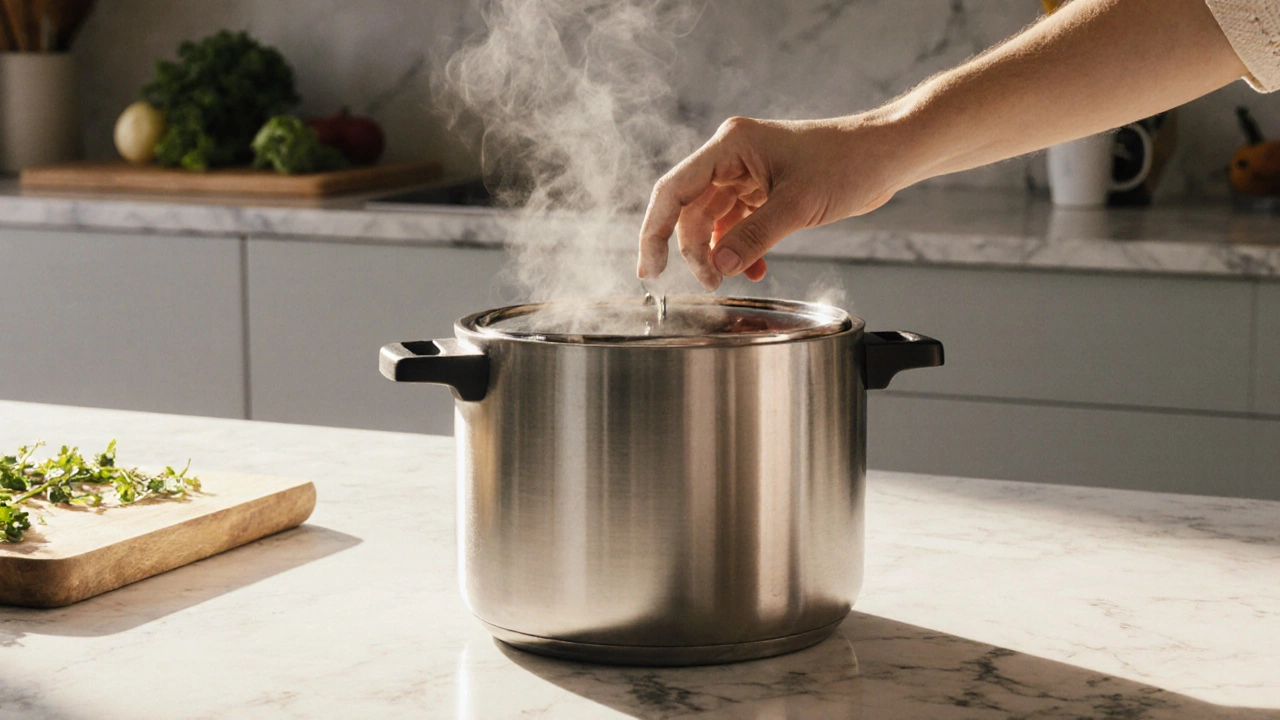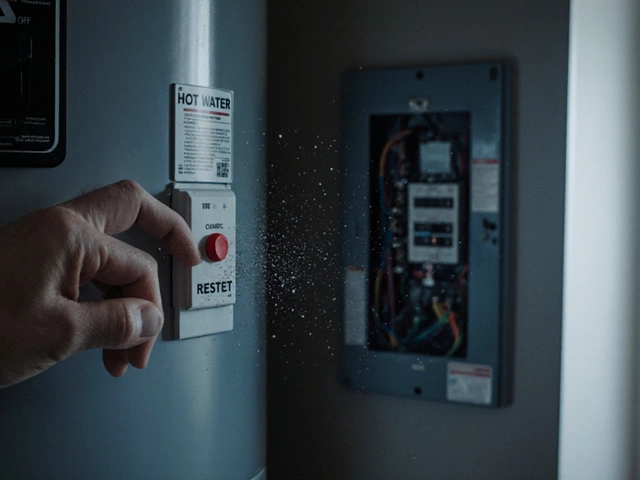Pressure Cooker Problem Identifier
Diagnose Your Pressure Cooker Issue
Select symptoms you're experiencing to identify possible causes and solutions. This tool analyzes based on common pressure cooker problems from the article.
Possible Issues
Ever wonder why your favorite kitchen gadget sometimes refuses to work as expected? Understanding the top pressure cooker problems can save you time, money, and a lot of frustration. Below we break down the most frequent issues, how to spot them, and practical steps you can take before calling a professional.
Key Takeaways
- Seal failures, blocked valves, and faulty safety mechanisms are the three big culprits.
- Regular cleaning of the pressure valve, sealing ring, and vent pipe prevents most breakdowns.
- Never ignore abnormal steam or pressure warnings - they’re safety signals.
- Simple DIY fixes cover 70% of common issues; the rest need a qualified technician.
How a Pressure Cooker Works
When cooking fast, pressure cooker is a sealed pot that uses steam pressure to cook food at temperatures above 100°C, dramatically reducing cooking time. The system relies on three core components:
- Pressure valve regulates the internal pressure by releasing excess steam.
- Sealing ring (also called a gasket) creates an airtight lock between the lid and the pot.
- Safety valve acts as a backup, opening if the main valve fails or pressure exceeds safe limits.
Other supporting parts include the pressure sensor that alerts you to high pressure, the heating element (in electric models) that supplies the heat, the lid lock mechanism that prevents accidental opening, and the vent pipe that directs released steam away safely.

Most Common Problems
Below is a quick snapshot of the issues you’ll encounter most often.
| Problem | Symptom | Likely Cause | Simple Fix |
|---|---|---|---|
| Seal Failure | Steam leaks from the lid edge | Worn or damaged sealing ring | Replace the sealing ring; clean the groove |
| Blocked Pressure Valve | Pressure builds, cooker won’t release steam | Food particles or mineral buildup | Clean the valve with a toothbrush and vinegar |
| Safety Valve Pops Early | Steam hisses constantly, even at low pressure | Safety valve misadjusted or debris inside | Adjust the spring tension; clean the valve seat |
| Over‑pressure Warning | Digital display shows error code; cooker shuts off | Faulty pressure sensor or electronic control | Reset the unit; if persists, replace sensor |
| Heating Element Failure (electric models) | Pot doesn’t heat despite being turned on | Burnt element or loose connection | Inspect element; replace if charred |
Step‑by‑Step Diagnosis
When a problem appears, follow this checklist before you start any repair:
- Unplug or disconnect the cooker. Safety first.
- Visually inspect the sealing ring. Look for cracks, tears, or hardening.
- Check the pressure valve and safety valve for visible debris.
- Run a water test: fill the pot with 2 cups of water, lock the lid, and heat on low. Observe whether steam escapes from the edges.
- If the cooker displays an error, consult the manual’s error‑code table; note any recurring codes.
- Listen for unusual rattling - it may indicate a loose lid lock or a mis‑aligned vent pipe.
Document what you see. A clear symptom‑cause link will speed up the fix and help the technician if you need one.
DIY Fixes You Can Do at Home
Most homeowners can tackle the first three problems with basic tools.
- Replacing the sealing ring: Purchase the exact model number from the manufacturer. Slide the old ring out of its groove and push the new one in firmly until it sits flush.
- Cleaning the pressure valve: Remove the valve (usually a screw‑off cap). Soak it in warm vinegar for 10 minutes, scrub with a soft brush, rinse, and re‑install.
- Adjusting the safety valve: Some models have a tiny screw on the valve body. Turn clockwise to tighten (reduces premature venting) or counter‑clockwise to loosen.
Always re‑assemble in the reverse order you disassembled, and run a quick water test to confirm the fix.

When to Call a Professional
If you encounter any of the following, it’s time to call an expert:
- Electronic error codes that persist after a reset.
- Burnt or melted heating element (electric models).
- Cracked pressure sensor housing or erratic pressure readings.
- Repeated safety‑valve activation despite cleaning.
These issues often involve internal electrical components or pressure‑rated parts that require calibrated tools and certification.
Preventive Maintenance Checklist
Spend five minutes after each use, and you’ll dramatically extend the life of your cooker.
- Wipe the lid rim and pot edge with a damp cloth to remove food residue.
- Run a quick steam purge: lock the lid with water, heat for 2 minutes, then let it vent fully.
- Inspect the vent pipe for blockages; clear with a thin brush if needed.
- Every 3‑6 months, remove the sealing ring and soak in mild soap solution; rinse and dry thoroughly.
- Store the cooker with the lid slightly ajar to let moisture escape.
Keeping these steps in your routine reduces the odds of a seal leak, a stuck valve, or a safety shut‑off.
Frequently Asked Questions
Why does my pressure cooker keep hissing?
A constant hissing sound usually means steam is escaping through the lid edge or a partially blocked pressure valve. Check the sealing ring for damage and clean the valve thoroughly.
Can I use regular dish soap on the sealing ring?
Avoid harsh detergents that can degrade the rubber. Warm water with a mild, fragrance‑free soap is safe. Rinse well and let it air‑dry before reinstalling.
What does the over‑pressure error code mean?
The cooker’s internal sensor has detected pressure above the safe limit. First, turn the unit off, let it cool, and reset per the manual. If the code returns, the sensor or the pressure valve may need replacement.
Is it safe to replace the sealing ring myself?
Yes, as long as you use the exact part number for your model. The ring seats in a simple groove and does not involve any pressure‑rated components.
My electric pressure cooker won’t heat. What’s wrong?
First, verify the power cord and outlet. If they’re fine, the heating element may be burnt out or the internal fuse tripped. Replacing the element usually requires a technician.







